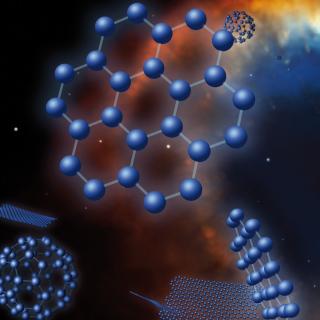Bibcode
Weinberg, David H.; Holtzman, Jon A.; Johnson, Jennifer A.; Hayes, Christian; Hasselquist, Sten; Shetrone, Matthew; Ting, Yuan-Sen; Beaton, Rachael L.; Beers, Timothy C.; Bird, Jonathan C.; Bizyaev, Dmitry; Blanton, Michael R.; Cunha, Katia; Fernández-Trincado, José G.; Frinchaboy, Peter M.; García-Hernández, D. A.; Griffith, Emily; Johnson, James W.; Jönsson, Henrik; Lane, Richard R.; Leung, Henry W.; Mackereth, J. Ted; Majewski, Steven R.; Mészáros, Szabolcs; Nitschelm, Christian; Pan, Kaike; Schiavon, Ricardo P.; Schneider, Donald P.; Schultheis, Mathias; Smith, Verne; Sobeck, Jennifer S.; Stassun, Keivan G.; Stringfellow, Guy S.; Vincenzo, Fiorenzo; Wilson, John C.; Zasowski, Gail
Bibliographical reference
The Astrophysical Journal Supplement Series
Advertised on:
6
2022
Citations
50
Refereed citations
44
Description
We apply a novel statistical analysis to measurements of 16 elemental abundances in 34,410 Milky Way disk stars from the final data release (DR17) of APOGEE-2. Building on recent work, we fit median abundance ratio trends [X/Mg] versus [Mg/H] with a 2-process model, which decomposes abundance patterns into a "prompt" component tracing core-collapse supernovae and a "delayed" component tracing Type Ia supernovae. For each sample star, we fit the amplitudes of these two components, then compute the residuals Δ[X/H] from this two-parameter fit. The rms residuals range from ~0.01-0.03 dex for the most precisely measured APOGEE abundances to ~0.1 dex for Na, V, and Ce. The correlations of residuals reveal a complex underlying structure, including a correlated element group comprised of Ca, Na, Al, K, Cr, and Ce and a separate group comprised of Ni, V, Mn, and Co. Selecting stars poorly fit by the 2-process model reveals a rich variety of physical outliers and sometimes subtle measurement errors. Residual abundances allow for the comparison of populations controlled for differences in metallicity and [α/Fe]. Relative to the main disk (R = 3-13 kpc), we find nearly identical abundance patterns in the outer disk (R = 15-17 kpc), 0.05-0.2 dex depressions of multiple elements in LMC and Gaia Sausage/Enceladus stars, and wild deviations (0.4-1 dex) of multiple elements in ω Cen. The residual abundance analysis opens new opportunities for discovering chemically distinctive stars and stellar populations, for empirically constraining nucleosynthetic yields, and for testing chemical evolution models that include stochasticity in the production and redistribution of elements.
Related projects

Nucleosynthesis and molecular processes in the late stages of Stellar Evolution
Low- to intermediate-mass (M < 8 solar masses, Ms) stars represent the majority of stars in the Cosmos. They finish their lives on the Asymptotic Giant Branch (AGB) - just before they form planetary nebulae (PNe) - where they experience complex nucleosynthetic and molecular processes. AGB stars are important contributors to the enrichment of the
Domingo Aníbal
García Hernández